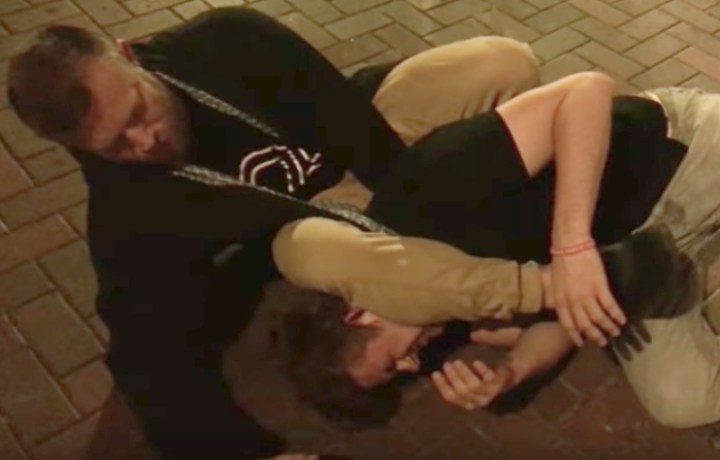Have you ever heard some No Gi only guys say “The Gi is unrealistic bro” ?
Well unless you’re always at the beach, the potential aggressors that you will face will be wearing clothes…
In a thought-provoking segment of the “I Suck At Jiu-Jitsu Show,” hosted by Josh McKinney, a common belief within the martial arts community is put under scrutiny. The episode titled “Gi Training Doesn’t Work in Da Streets” aims to debunk the notion that training in a Gi, the traditional uniform worn in Brazilian Jiu-Jitsu, is irrelevant for real-life self-defense situations.
Understanding the Practicality of Gi Training
The debate around Gi versus No-Gi training often centers on their applicability in actual self-defense scenarios. McKinney challenges this by asking, “Is No-Gi applicable in a real-life scenario? People don’t walk around wearing Gis, but also you don’t fight on mats.” He highlights the fundamental difference in fighting dynamics on varying surfaces, such as concrete, compared to the mats in a training dojo. He further elaborates, “If you have ever grappled on concrete, not in a real fight, but if you try to play any guard that requires movement, you cannot slide up and down concrete like you do mats.”
Street Fights and Jiu-Jitsu Techniques
McKinney makes a critical observation about the nature of street fights and the role of Jiu-Jitsu training. “In a real fight, it is way more important to be on top than anything else,” he asserts. The emphasis is not on the specific Gi or No-Gi techniques but on the fundamental principles of fighting – avoiding getting hit and maintaining a dominant position. He acknowledges that the training approach in Jiu-Jitsu, irrespective of the attire, may not align perfectly with real-life fighting scenarios but still offers significant advantages.
The Advantage of Jiu-Jitsu Training
Highlighting the practical benefits of Jiu-Jitsu training, McKinney notes, “For most people, having six months of Jiu-Jitsu training where you have trained live, you will have so much more fight experience than almost any other Average Joe and will probably be able to beat them in a fight.” This statement underscores the value of Jiu-Jitsu training in preparing individuals for unforeseen physical confrontations, regardless of whether it’s in a Gi or No-Gi.
Versatility and Intensity in Training
The conversation also touches upon the adaptability and intensity of Jiu-Jitsu training. McKinney points out, “If you are grappling at 100% intensity four days a week for six months, you are going to be so much more prepared for how a real-life scenario is going to feel.” This aspect of Jiu-Jitsu training, where one can train at full intensity, is seen as a crucial factor in preparing for real-life self-defense situations.
Confronting the Myth
As McKinney concludes, the myth that Gi training has no place in real-life self-defense is effectively dismantled. The episode sheds light on the versatility of Jiu-Jitsu techniques and their practical application in various scenarios, including street fights. It reaffirms that the core principles of Jiu-Jitsu, learned through either Gi or No-Gi training, are invaluable in preparing for real-world confrontations.


















